There are few contemporary artists who make people go weak in the knees, but mention Frank Frazetta and even the most stoic buckle and get all gooey inside. Conan! Death Dealer! Tarzan! John Carter! W-O-M-E-N! Yowzer! Since the late 1960s, fans and pros alike have written and gushed and swooned as they described Frazetta as a God (capital “G”) of fantastic art. I sat next to Frank’s wife Ellie on a number of occasions in the Frazetta Museum and watched visitors tear-up when standing in front of their favorite paintings or become speechless when Frank wandered over from the house. The impact his art had and still has on people—particularly on those who encountered them first at a certain age as paperback or magazine covers—is undeniable, long-lasting, and affecting.
Because Cathy and I worked closely with Frank and Ellie on a batch of books (as well as other miscellaneous projects), I’ve been asked in various interviews over the years what was it that made Frank “the greatest fantasy artist of all time?” My answer has routinely been the same:
I don’t believe he was—or is—the “greatest fantasy artist of all time.” I believe he’s one of many greats who are great for many different reasons.
But what I also always concede without a moment’s hesitation is that Frank Frazetta was the best Frank Frazetta there will ever be. No one, no matter how carefully they study or imitate his style, can ever do what Frank did simply because they come from different places and different experiences; they can’t know what was going on in Frank’s head or why he did what he did the way he did it.
My relationship with the Frazettas began in the early 1970s and continued on and off and on again until their deaths. Others most certainly knew them better during certain time periods: Nick Meglin and Angelo Torres, Bob Barrett, and Russ Cochran were close to the them for various stretches, but it was unquestionably Dave Winiewicz who was their longest-lasting and most intimate friend. Nobody knew the Frazettas better than Dave—which is why some of his candid (and absolutely truthful) anecdotes upset fans that have embraced the Frazetta Myths. (There are a lot of them.) Me? I think my relationship—my friendship, my perspective, my experiences—with Frank and Ellie was a little different. Not better, just…different. I’ll probably write about it a length at some point (more than I already have, that is), but for today’s post I’ll share something that Frazetta and I talked about more than once through the years.
Perspective and spacial cues, i.e. proportion and scale.
Art God he may have been, but sometimes Frank had problems with both.
I spent a lot of one-on-one time with Frank over the years and we’d talk about all sorts of things, but I think he talked about art and artists a bit more with me than he may have with others. We’d go through Spectrum together every year and he’d pick out his favorites and ask questions about others. We’d talk about the artists he liked and those he didn’t—and, of course, he’d talk about himself a bunch. Did Frank have an ego? God yes! But he also had insecurities that he often tried to mask with braggadocio and swagger. Despite his Saturday morning art classes when he was a kid (he actually learned more about painting later in life from Roy Krenkel than he ever did from Michele Falanga) and his teenage apprenticeships to John Giunta, Graham Ingels, and Ralph Mayo, Frazetta was largely a self-taught artist; regardless of his accomplishments and fame later in life, he was sensitive about his lack of formal training and didn’t take criticism particularly well.
It was easy for me to flatter Frank and his work when we were together: my admiration and love for his art was (and is) sincere. But the more time we spent together, the more probing the conversations became. Everybody told him he was the greatest blah blah blah; he’d heard it all before and wanted some straight talks. My discomfort in the beginning with his pointed questions in time gave way to freewheeling give-and-take. (He reviewed my portfolio once: one of the worst experiences of my life. Not because of anything he said.) Frank was always interested in cameras and technology—he had an Artograph that he’d use as well as a darkroom—and we talked about the computer as an art tool; he was pretty fascinated and I promised to teach him Photoshop and Painter when there was a chance. Unfortunately, we never had the opportunity.
So there was the time he asked me to pick out paintings I thought had problems and explain how to fix them. “Problems? Oh crap!” Distorted anatomy was part of Frank’s style—he made bodies, human and animal, do what he wanted them to do rather than what reality dictated—so that was off the table as far as I was concerned. But proportion and scale? Well…
Yeah, he put me on the spot and I figured, why not? We’d talk, I’d go home, do some down-and-dirty Photoshop manipulation, and bring him a color print the next time I’d visit. None of them were perfect—nor were they intended to be—but were just an aspect of or addition to the conversation. Frank was often surprised at what I’d do and it would almost inevitably prompt more questions.
Geez, we drank a lot of coffee late at night.


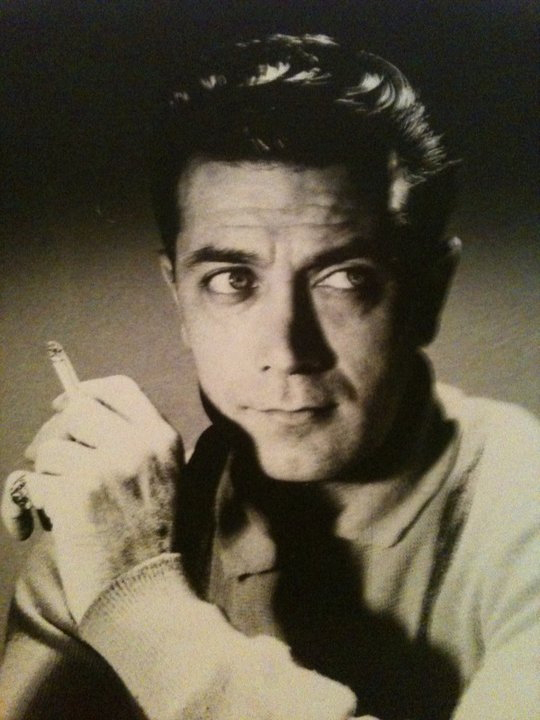
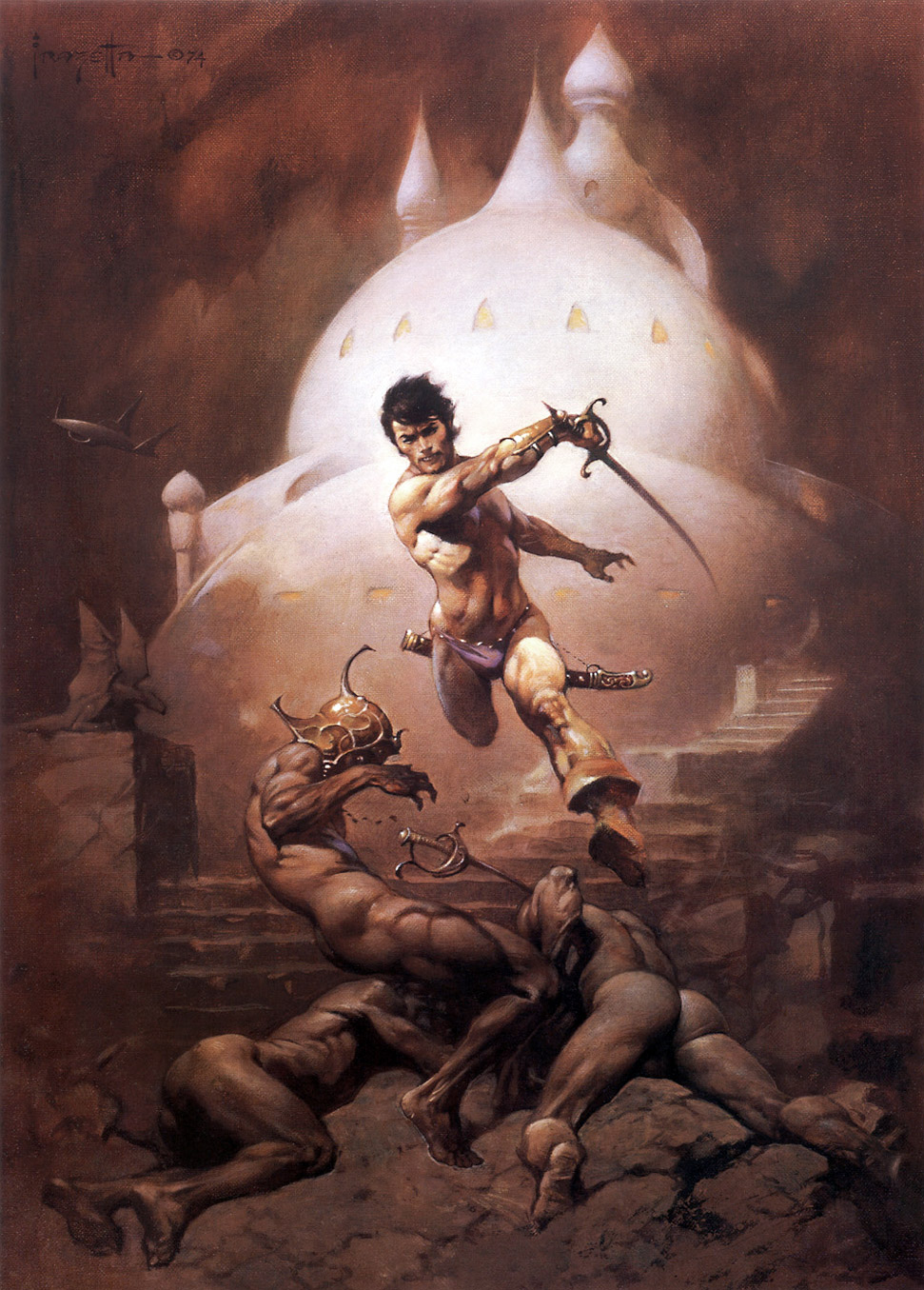
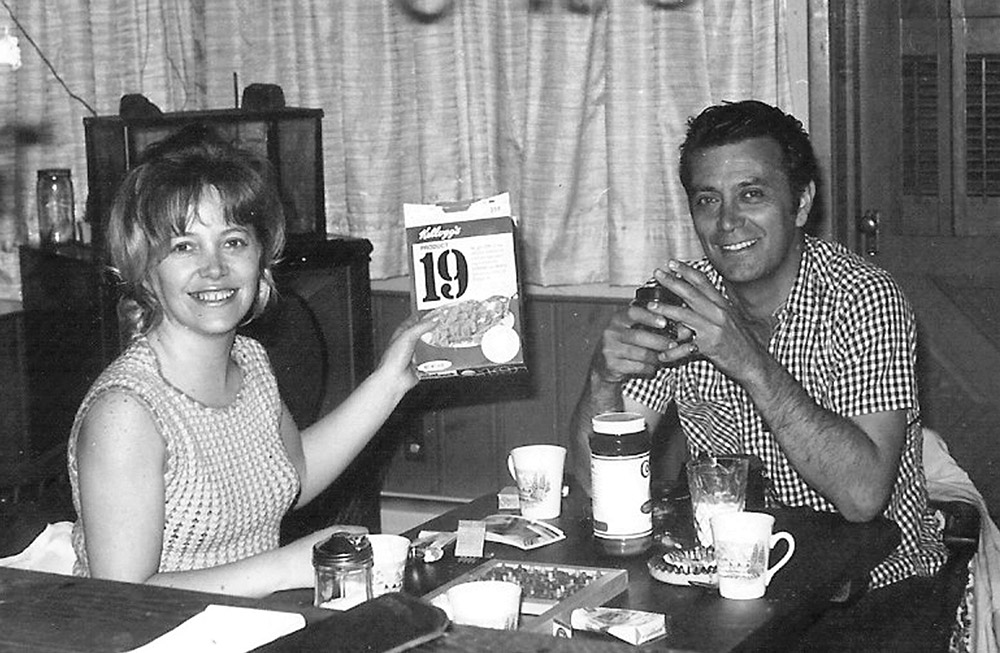
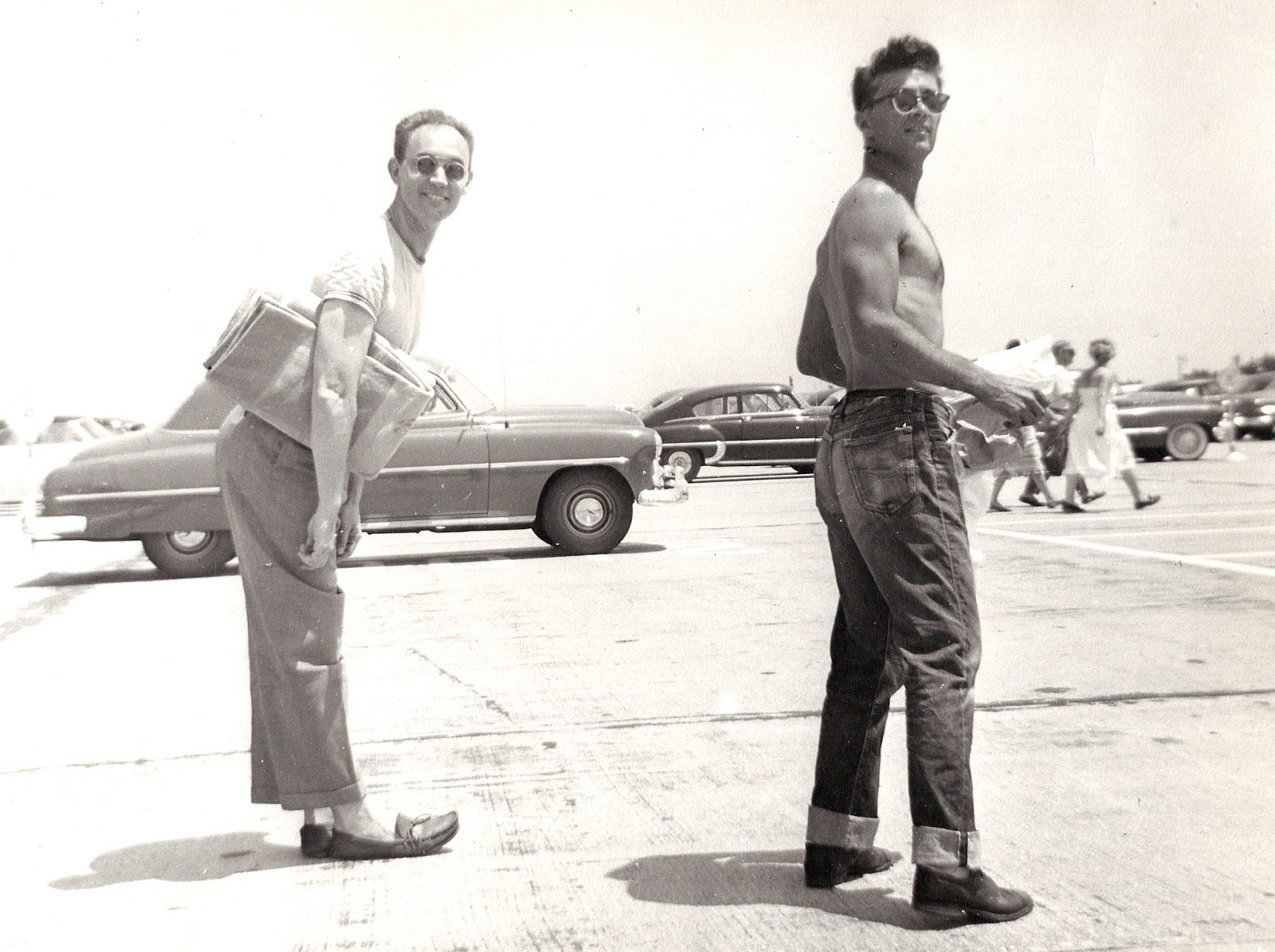



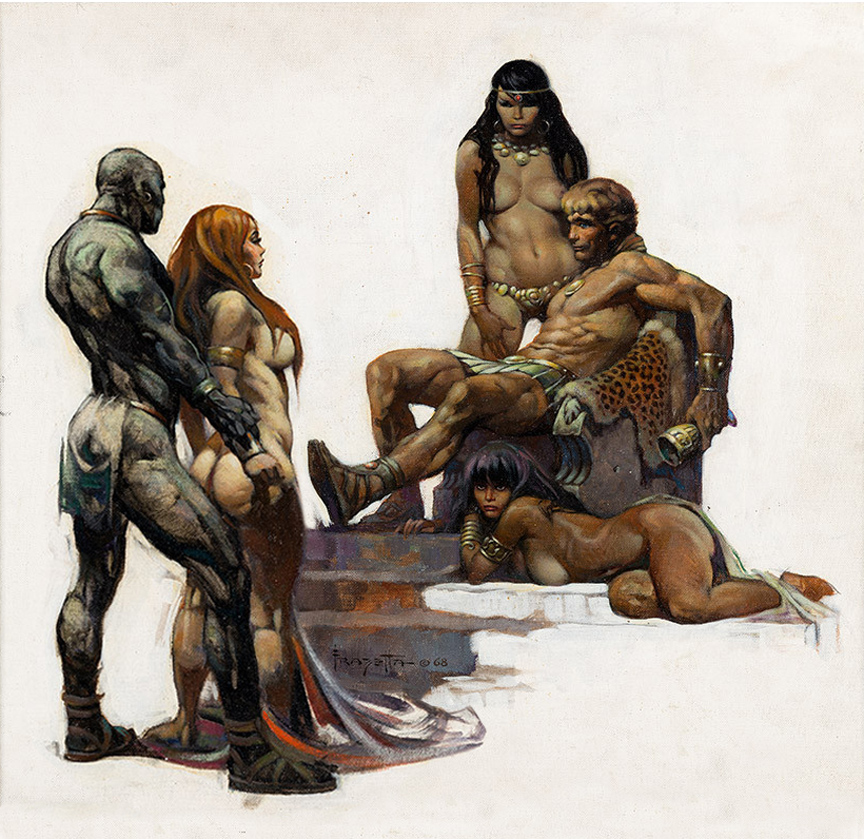
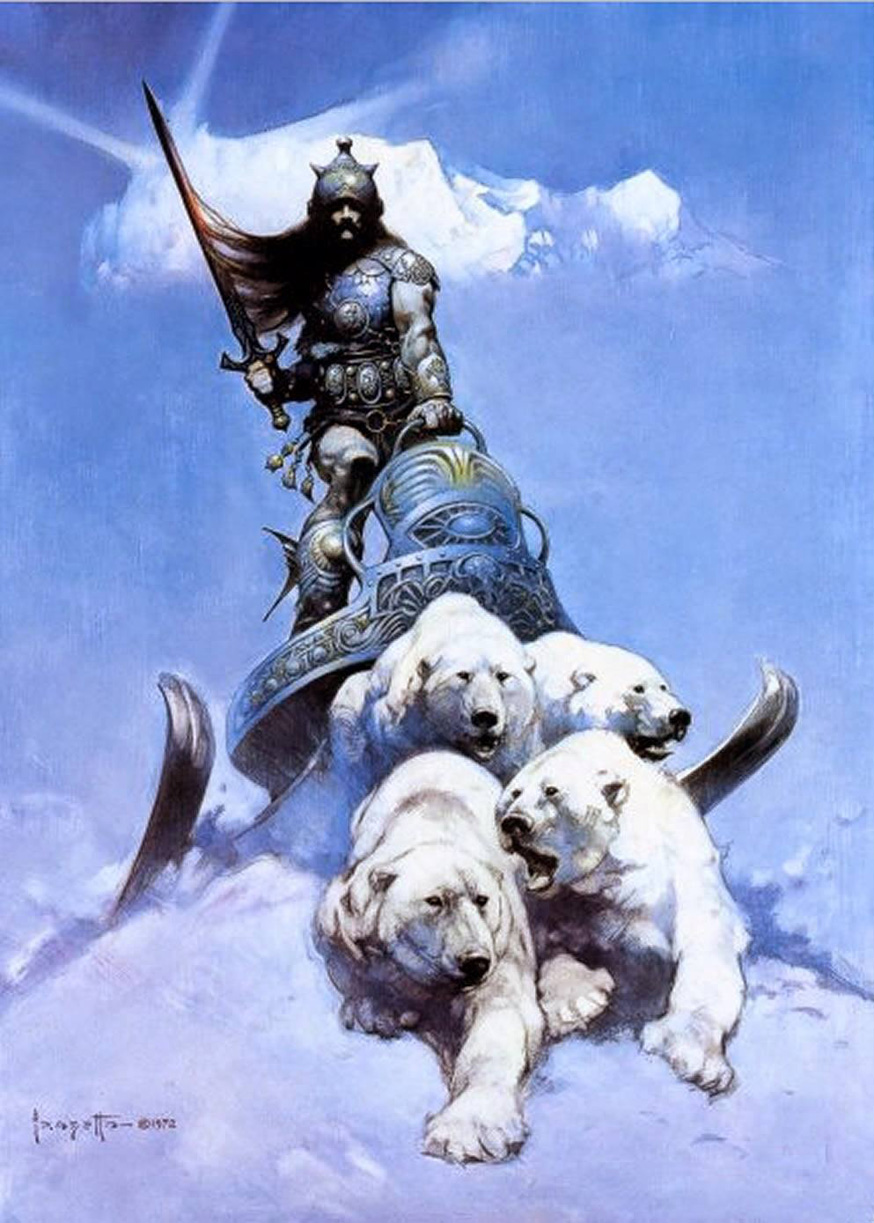
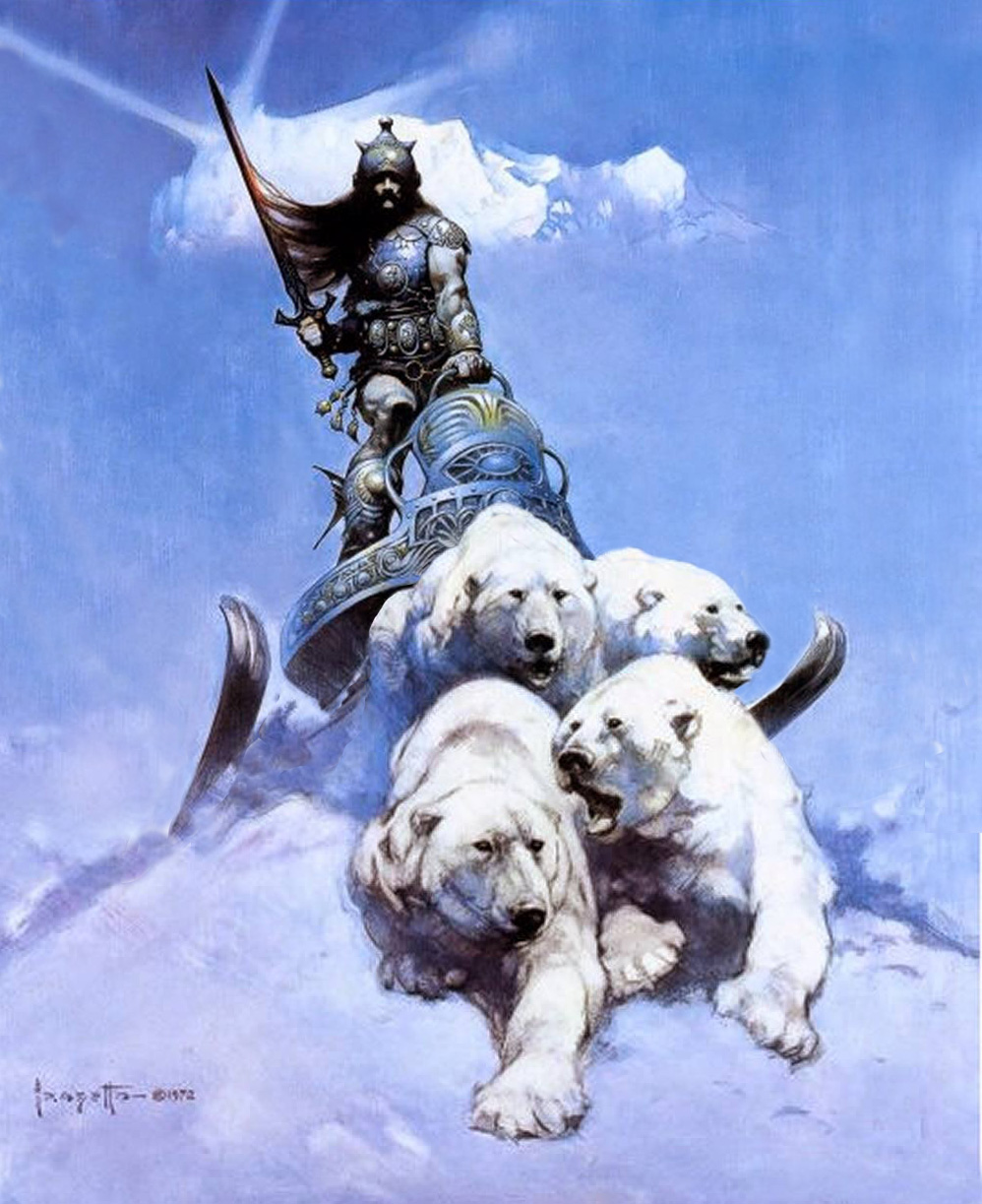
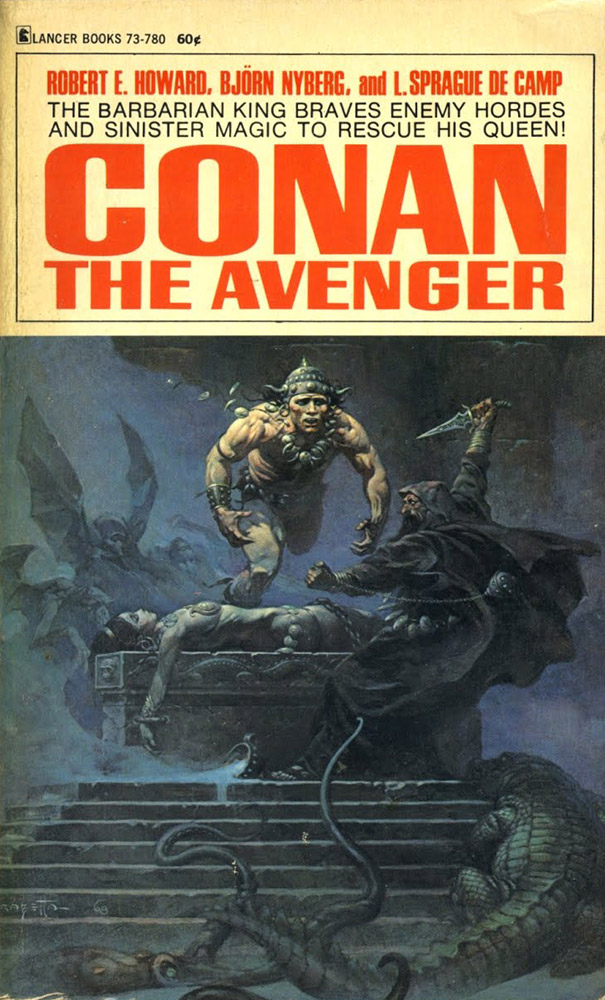
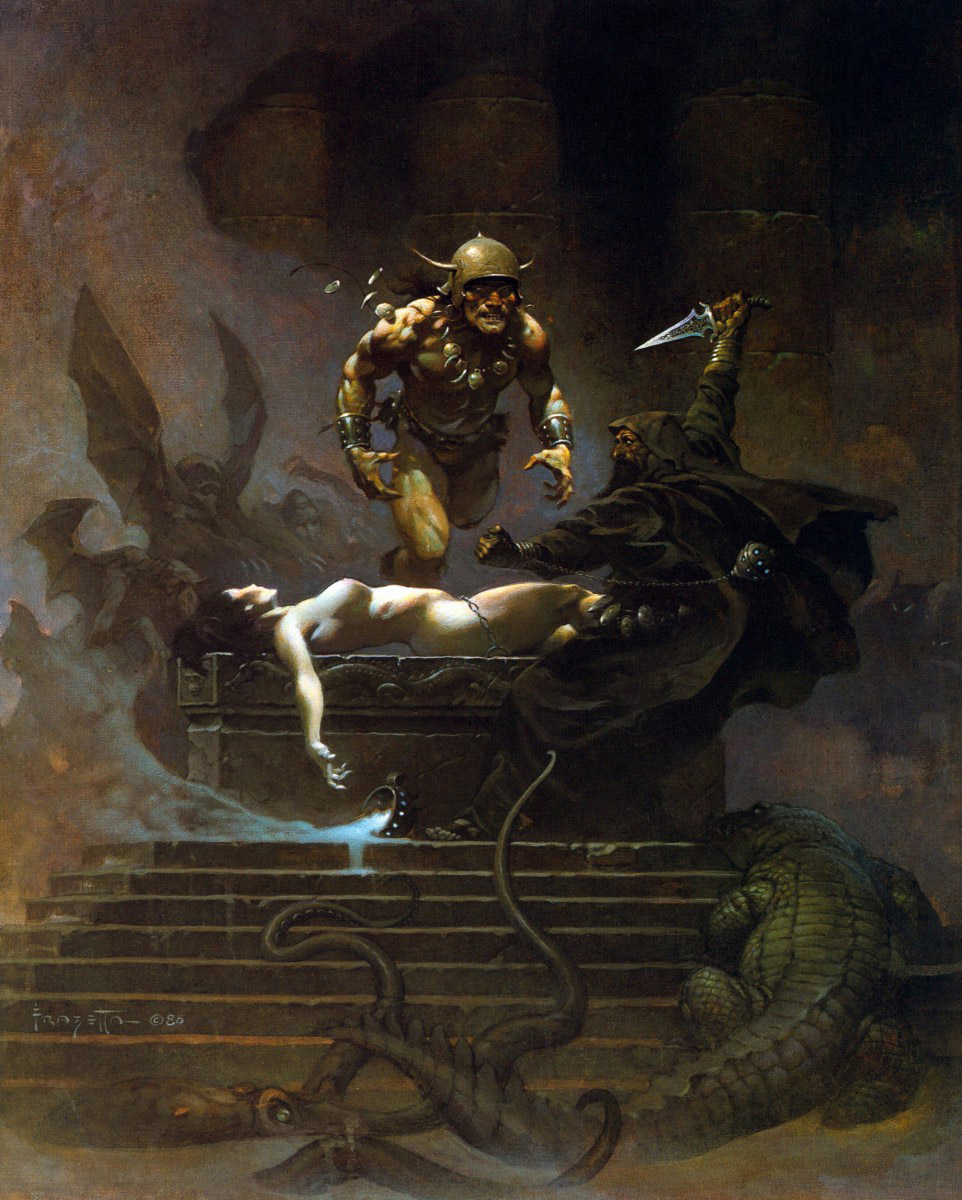
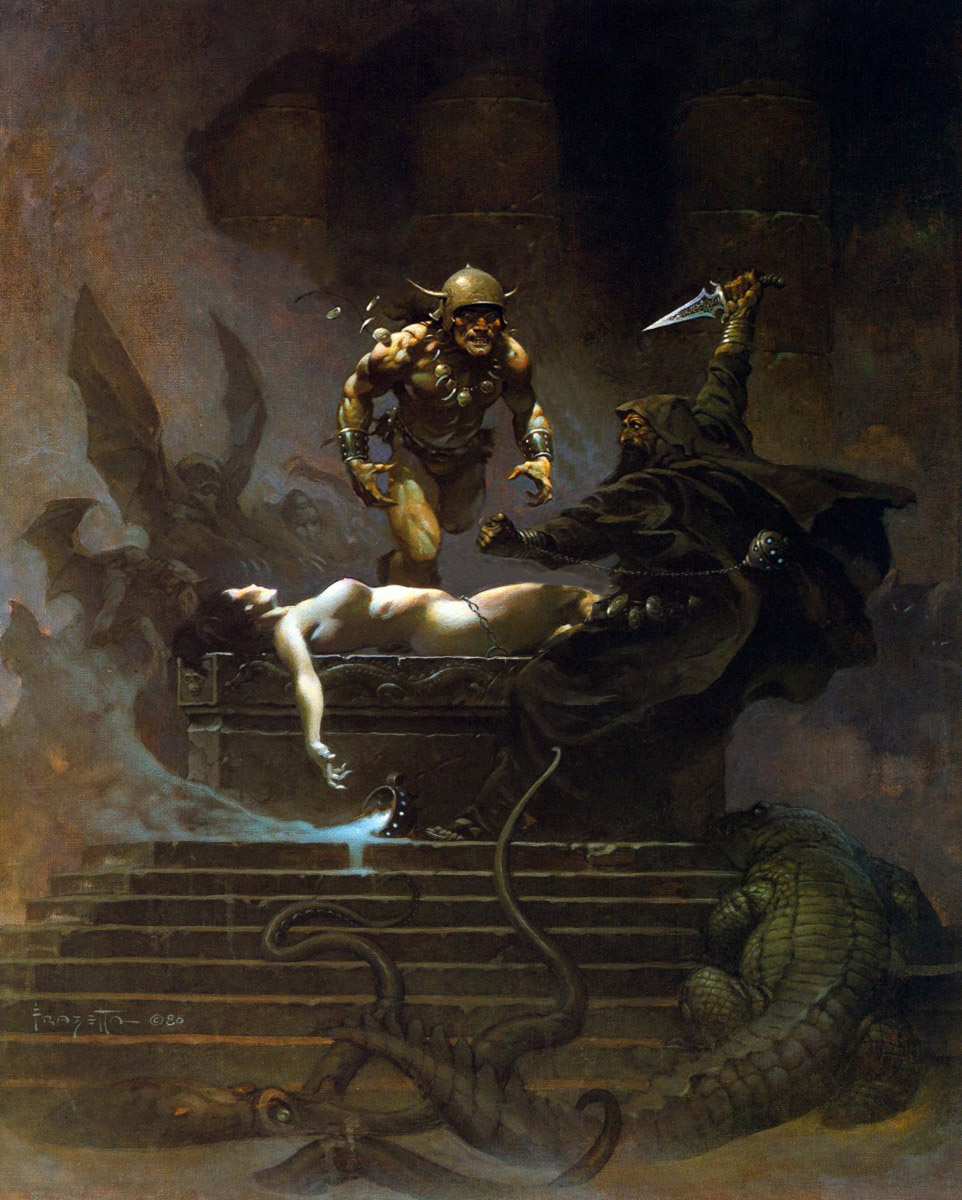
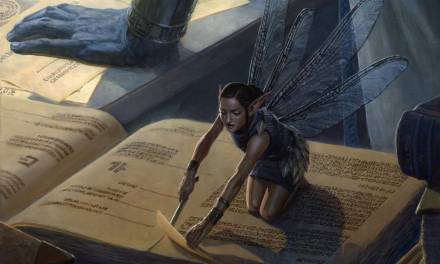
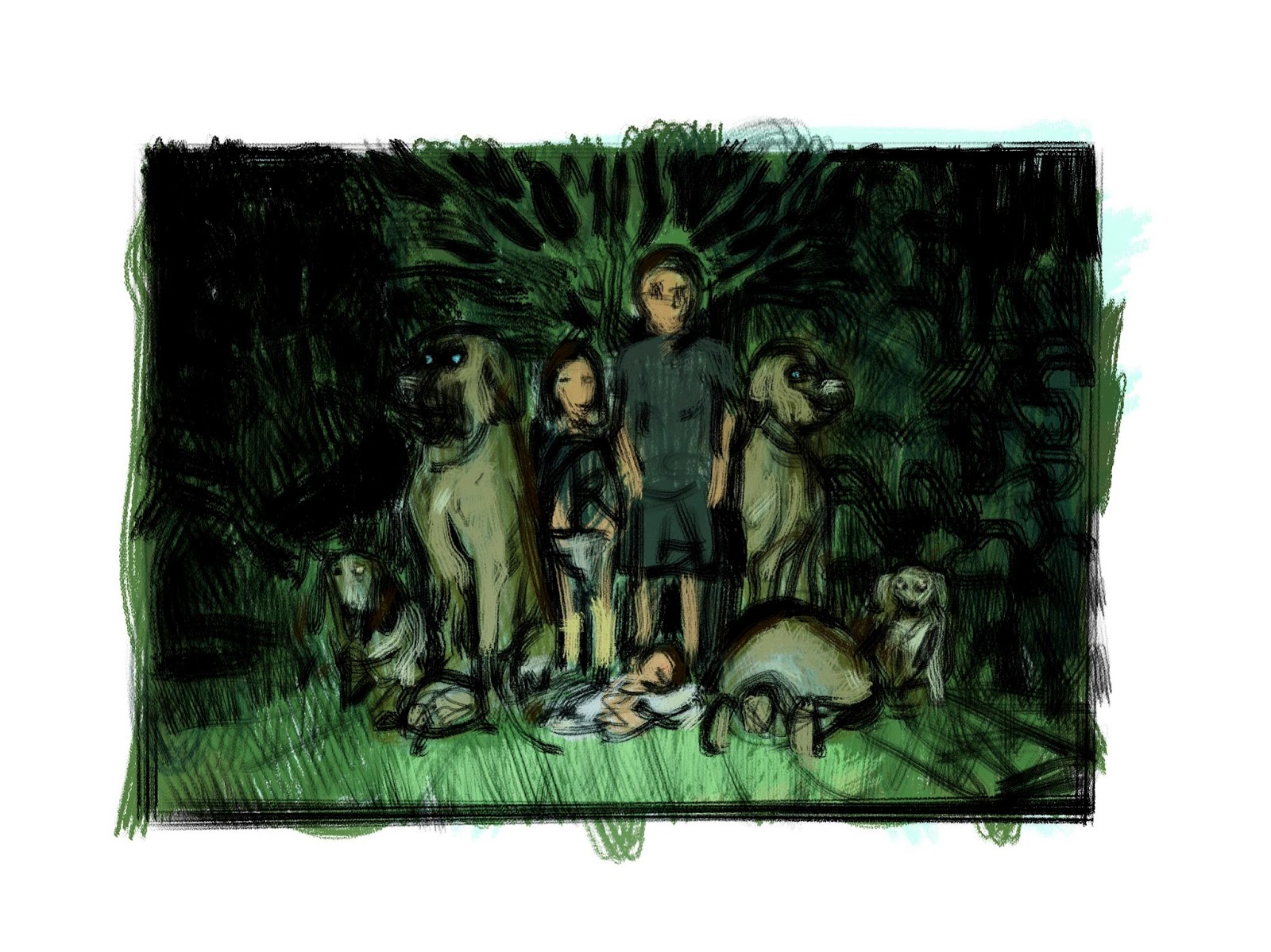

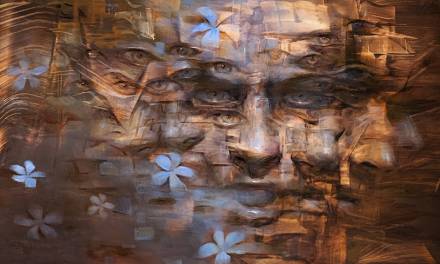
Thanks Arnie. Interesting – and fun stuff. Important not to lose the “having fun” part of creating – and good to know Frazetta insisted on having his quota.
PS enlarging those front two bears makes all the difference! Did he think so?
?
Fascinating. Frank is a contemporary artist whose life I would love to learn more about, not just his art. Ellie especially sounds like she was the legendary “woman standing behind a great man.”
Do you know of any books or biographies that I could check out to learn more?
What a fun post! All the 'changes' done to those paintings are spot on, and it is good to see he took it with humour. It is also good to read that the mighty Frazetta had challenges to contend with during painting. This was a good read, thank you!
Great post! This was really satisfying to read, and your revisions all make perfect sense. Like Nicolay said, it's encouraging that even Frazetta ran into trouble sometimes. Hope to see more posts like this in the future!
Thanks, Paul! Yeah, he liked the suggestions—though usually expressed the “like” we a good dollop of good-natured “ball busting,” too. If Ellie was out when I arrived she'd leave me a note taped to the door (I still have a stack of them) telling me to go around back to the studio entrance and Frank would let me in. I'd knock, the door would open, he'd give me a big smile and say, “Hey hey! I just made a fresh pot of coffee! C'mon in! What'd you bring me this time?” 🙂
I wrote quite a bit about him in Cathy's and my books, ICON, LEGACY, TESTAMENT, and ROUGH WORKS. Frank Jr. wrote about his dad in FRANK FRAZETTA: ART AND REMEMBRANCES. And, of course, there's the documentary, FRANK FRAZETTA: PAINTING WITH FIRE. But there definitely needs to be a thorough (and honest) biography; it's a pretty fascinating story.
I'd like to know more about that other great lunatic of an artist, Roy Krenkel (I thought he was Frank's best buddy, not to take anything from Dave). I did't know he taught Frank stuff about painting. Now THAT there is a contradiction worth exploring as well. Anything on that?
I always saw these “issues” (and certainly never in these pieces) more like choices that enhance the design and impact of the image, much like the deformation of anatomy (I'm looking at you Ball and Chain!) like how directors go to a telephoto lens for something. The changes, tho fun, make for optically sane images that have less impact.
In Silver Warrior for instance, the polar bears look cool adding to the titanic Silver Warrior who's the focal point and the hook (I mean the initial attention grabber of the image). In the retouch, it looks optically sound but suddenly the warrior's the image's hook and the bears are the focal point. Or in Sacrifice, Conan looks less threatening and the wizard less of a puny guy who depends on magic.
Maybe these choices were more an instinct to add impact on a visceral level rather than some technical deficiency which probably could have been overcome. If some technical issue came up would he fix it if it served or mask it if it made the image worse? Or is it certain he didn't get it?
It is fun to see these in this new light, as an alternate suggestion and see what is added and what is reduced. I for one learned something about myself on this!
Wonderful! There cannot be many – if any – people that have had permission to “mess” with his paintings – and with him being open enough to appreciate an improvement!
Okay. My brilliant idea.
Frank Frazetta biopic by Clint Eastwood starring his son, Scott Eastwood.
Throwing this out there, because time is running out and I'm a giver.
Roy and Frank were, without question, close, especially in the 1950s and 1960s, but after the Frazettas moved to East Stroudsburg they saw and spoke less and less frequently until Roy's death in 1983. Similarly, Frazetta's friendship with Al Williamson peaked then wained and essentially ended (for various reasons). Nick and Angelo were Frank's longest-term friends, but Dave was inarguably the closest in the last 25 or so years of Frazetta's life.Frank worked in watercolor and gouache early in his paperback career; Roy worked in oils and when he asked Frank to help him on those Ace covers, Frank started using them and he was off to the races. He was always a quick study and eventually Krenkel was advising him not to make the covers “too good” or Donald Wollheim at Ace would know that Roy hadn't done them. Krenkel also worked with Jeffrey Jones, Michael Kaluta, and other younger artists early in their careers. (Roy told me a story once about the first Conan cover Frank did; it's a good story but I'm not 100% sure I believe it so I'm not comfortable repeating it.) Frazetta's earliest oils have thick applications of paint, but as he progressed his layers became thinner and thinner. I imagine that he would have enjoyed using water soluble oils if his health had remained good.But as I said in the post, none of this fiddling “improves” Frazetta's art; there were just a fun part of late-night talks with Frank.
I admire Roy Krenkle very much and I see a genius in him, second favorite after Frank. His work, for all it's shortcomings, is uniquely his own and I'm flabberghasted by his compositional skills and his inability to draw something without making it seem like he's also built a whole world or civilization! I didn't know, tho I suspected, he and Frank saw less and less of each other but it doesn't come through so much when you read about them (I've had your ICON book for years) because these guys seemed to have a powerful brotherly love. I didn't know Roy also worked with Jeff Jones (my 3rd favorite).
Also I didn't know Frank started thick in the beginning, it doesn't show. It seems he does whatever he wants when he wants but that generally his art is very thin, like watercolor, which puts the whole speed and alla prima thing into conflict for me. Dave gave me some insight into this on his blog because I was looking for info on how he did what he did in two unfinished pieces posted there, which seem to carry over to everything else, still lookinmg for answers.
I'm sure I'm not the only one who'd like to hear the Conan story, even with a discalimer.
Love that idea Thomas Diem.
Growing up a HUGE Conan fan (and thus, Frazetta) I'd say he was probably the biggest single influence to make me continue art and an eventual(though not always stable) career. Its always nice when you can read about your icons as human and know that many (if not most) artists share many of the same fears, insecurities and general humanity. Seeing Paul Bonner bouncing around here is a serious bonus for me too. You have been a huge inspiration for me getting back into art after some “life challenges”, thank you sir for your continued inspiration and general awesomeness. 😉
GOOD POST
Frazetta was no different than anybody else; he had his foibles, frustrations, and failings as we all do. He always struggled to paint hands and feet, which is why he often hid both (sometimes more convincingly than at others). When he was doing commercial art he worked fast (he was a terrible procrastinator—again, like many of us are) and sometimes got a little too close to see some of the problems or omissions. The drawing of the woman and the lion on the contents page of ICON is one example: Frank considered it finished until Dave Winiewicz mentioned that it was the best drawing of 3-legged lion he'd ever seen. Frazetta did a double-take, slapped his forehead, and quickly added the 4th leg. 🙂
And I agree: Paul Bonner is an inspiration to us all!
Very interesting post, Arnie! There are so many artistic and aesthetic issues that need further discussion within the massive body of Frazetta's work. One point. The influence of Krenkel on Frank has been quite overblown over the years. They were friends and got together to listen to music and talk. Frank told me many times that he was not influenced by Roy's art at all, not a bit. He loved Roy' s passion for all other artists. He was always bothered by Roy's lack of confidence. Krenkel was an absolutely wonderful guy, devoid of ego, playful and fun-loving. He was great to be around because of his sense of humor and native enthusiasm. Frank appreciated those qualities above all. We all thought that Roy was almost otherwordly, really different, but genuine and sincere and honest. I always enjoyed my time with him.
All the very best, Arnie! The world of Frazetta is vast and continues to enchant and beguile all of us.
DocDave Winiewicz
I agree, Dave: Roy's influence was not in any way stylistic, but rather in the amount of stuff Roy knew about art history, about other people, and about some technical aspects of working in oils. Which was relatively minor; as I mentioned, Frazetta picked things up very quickly. But Frank had already established his style by the time they met, as we know, and Foster and Capp (though Frank hated to admit it) were his prime influences, not Roy. I'm always hard-pressed to think of painters that influenced him, but I'd be surprised if he didn't get some inspiration from Stanley Meltzoff.
Thanks for commenting, Dave! You need to write that biography! 🙂
In visiting the Museum of Natural History in NYC’s Upper West Side I was impressed at how many of the African landscapes (painted on the walls behind the taxidermically preserved animals) reminded me of Frazetta images. Perhaps you can see some of them online. I believe Frank was influenced by some of these.
I think you’re probably right, Alec.
Bravo, Arnie!
I have talked about doing this in Photoshop for years. So glad you beat me to it.
Frazetta was a FABULOUS talent, but I also noticed he had problems with relative proportions of figures in some of his paintings (Tarzan and the lion with the TINY woman in the foreground who should have been quite large, for instance). In a number of his comics panels he drew human heads way too large (Thun’da, e.g., and in page one of one of his 1950s war comics a soldier’s head AND right hand are far too large for the body). Even with the mistakes the art was always compelling. For many years I would take my Kubert School students to the museum in East Stroudsburg and had the opportunity to speak with Frank and Ellie many times, and to meet the children.
Best regards,
Alec Stevens
Thanks, Alec (and sorry I didn’t reply earlier). And, yes, you’re absolutely right: there are plenty of examples of wonky proportions, impossible anatomy, and glaring errors of perspective and scale and NONE of it diminishes the wonderfulness of Frank’s art. I don’t know how he got away with it, but, damn!, he sure did. The visits from the Kubert School were always a jolt of energy for Frank and Ellie and they’d talk about them for weeks after.
The jolt was mutual, Arnie!
What??? Another reason to envy you???
Oh go on, Ken. 🙂
Interesting insight. Thanks, Arnie. A truthful biography is most definitely needed. I’ve started a blog on FrazettaGirls and plan to make it as accurate as possible.
Thanks, Sara. As I’ve mentioned over the years there are many myths and fabrications about Frank and Ellie that get repeated ceaselessly by fans and they’re ultimately detrimental to the Frazetta legacy. The truth is always a lot more interesting than any of the blarney because it makes Frank’s accomplishments even more remarkable. I think you’re doing a fabulous job with Frazetta Girls and are doing your grandparents proud—and you can bet I’ll be happily following your blog!
And for those who haven’t visited the Frazetta Girls page yet…what are you waiting for?
https://www.frazettagirls.com